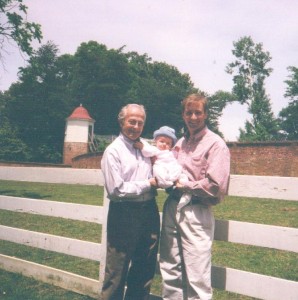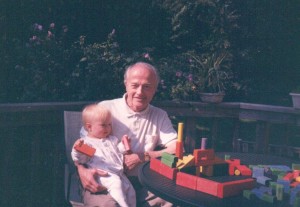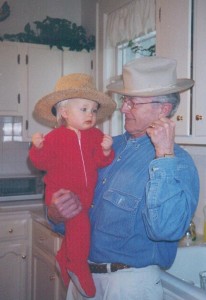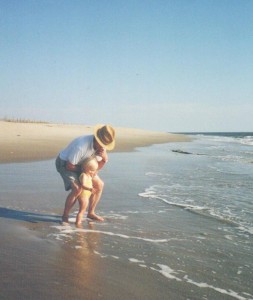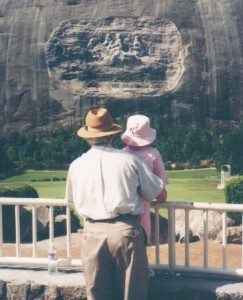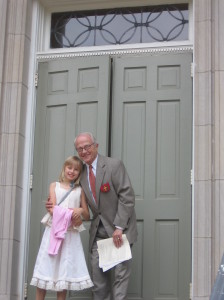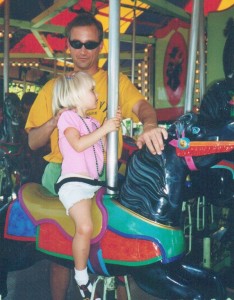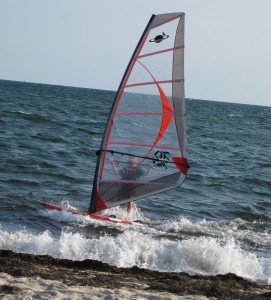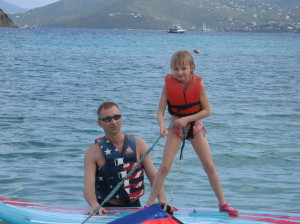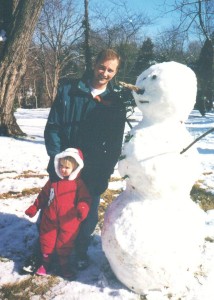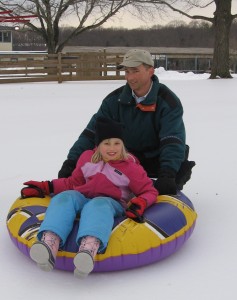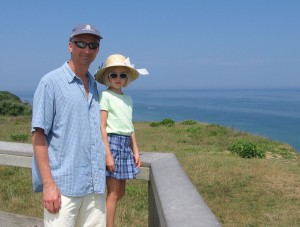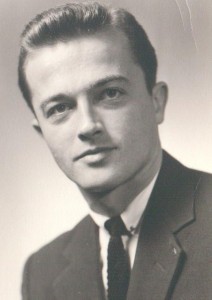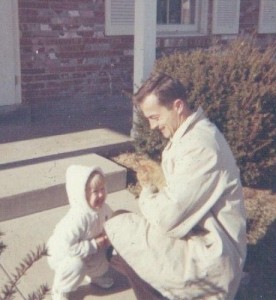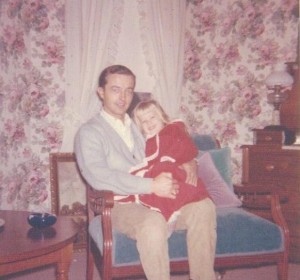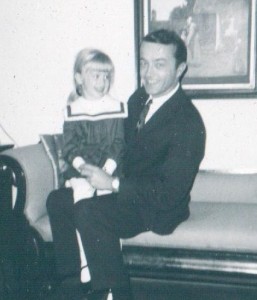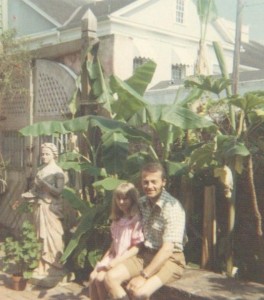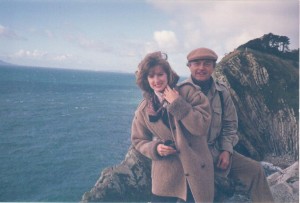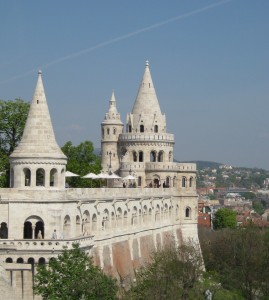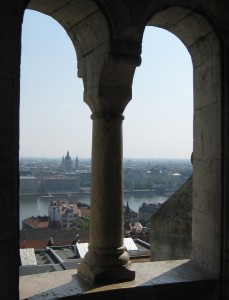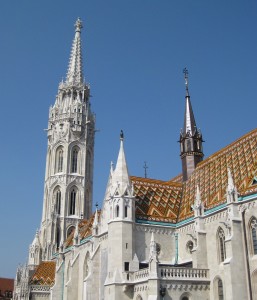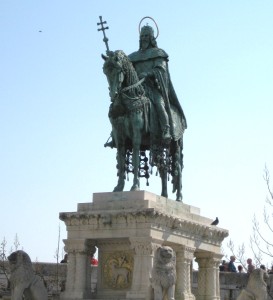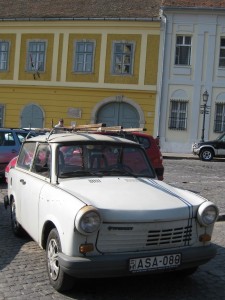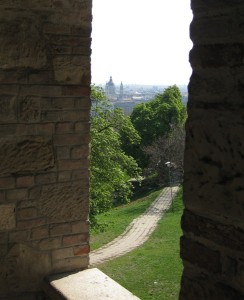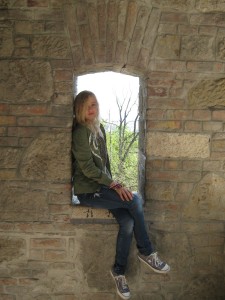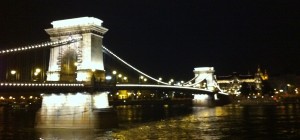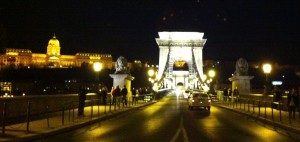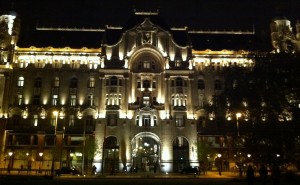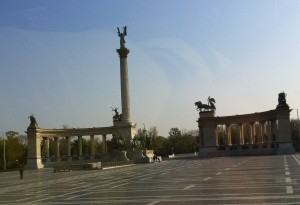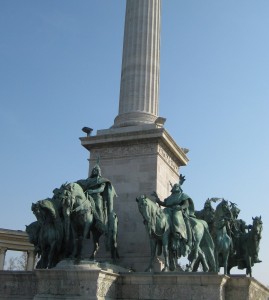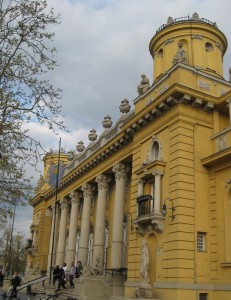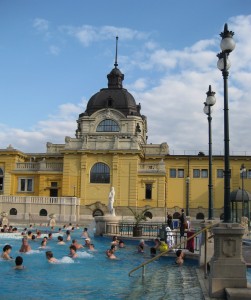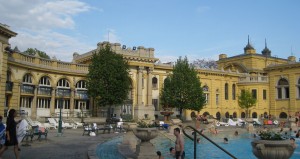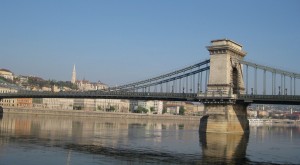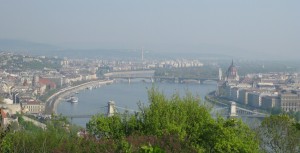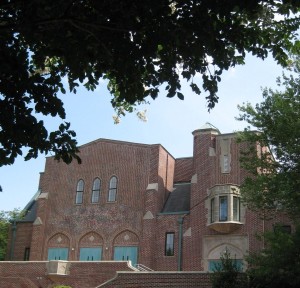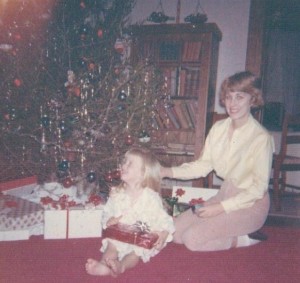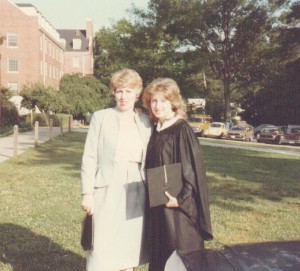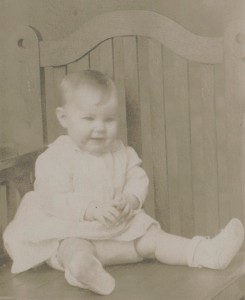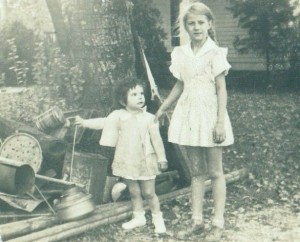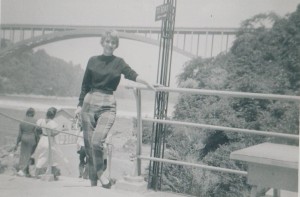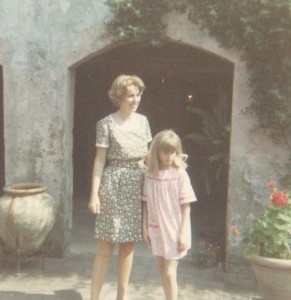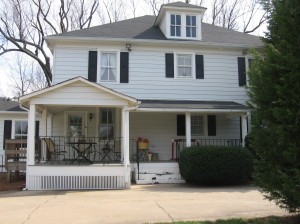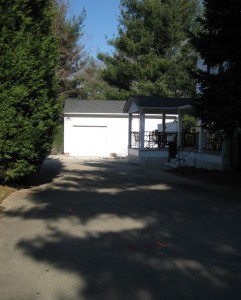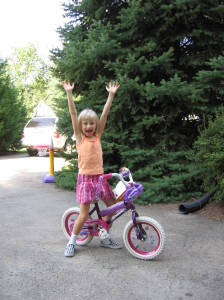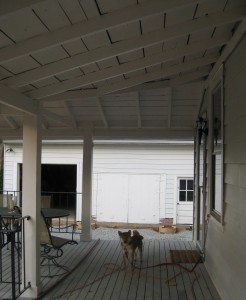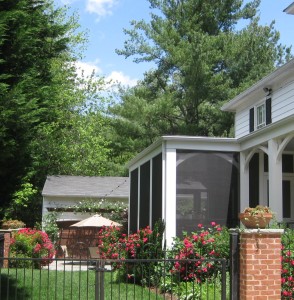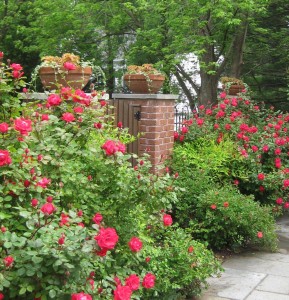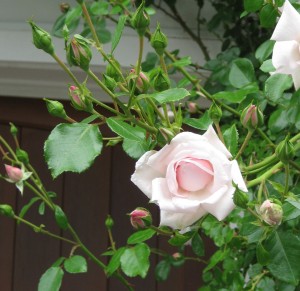I got a late start at married life, and my parents had almost given up the hope of cuddling a grandchild. They never nagged or made comments to that effect, but when D was born, they were elated. My father is a big fan of babies, and all babies love him. It’s hard to imagine a happier grandfather. He just couldn’t get enough of his little granddaughter. Couldn’t hold her enough, look at her enough, or compliment her enough. He always made it clear that she was absolutely, hands-down, the prettiest, smartest, most amazing baby ever. Except for me, of course.
One of our first major outings with my parents and D was a trip to Mount Vernon when she was about five months old. My husband and my father each wanted to be the one to carry her, to bask in her sweet baby glory. Here, they pretend briefly, for the photo, that they are willing to share her.
These old blocks were some of D’s favorite early toys. They were mine as a child, so Daddy had many prior years of architectural practice. At this age, D was not much of a builder, but she found pronounced enjoyment in banging one block against another or any hard surface. Soon she discovered that knocking down Papa’s carefully constructed creations brought much satisfaction. He didn’t care, as long as he got to sit with her, hug her and look at her. He has a real talent for simply enjoying his granddaughter in all that she does.
Here, we were in Atlanta to celebrate D’s first birthday. Daddy may have been giving her some sage grandfatherly advice: if you have to fight, always get in the first punch. She appears to be paying close attention. It was about this time that she decided to call my father “Papa.” My parents and I had lobbied for “Grandaddy,” but she would have none of it. During this period she was beginning to say many words, and she tended to speak with an air of surprising gravitas. She fixed my father with a stern look and declared forcefully, “Papa!” Then she turned to my mother, who was dead set on not being “Granny” or “Grandma.” She had hoped to steer D toward saying “Grandmama,” but again, NO. D ordained, with confidence and finality, that she would be “Nana.”
At Bald Head Island in North Carolina, Papa was so excited to be at the ocean for the first time with D that he almost let his shoes float out to sea with the tide. He loved holding her as the sand rushed out from under her feet, a completely novel sensation. One of Papa’s most appealing traits is his joy in seeing the world through the eyes of a child. When he was with his little granddaughter, he seemed to relish the wonders of the everyday as much as she did.
While my parents have minimal interest in board games or cards, they put in many hours of elaborate pretend play with D. She especially enjoyed playing school. My mother was the teacher, D was the ideal pupil, and Daddy channeled a mischevious, smart-mouthed little boy he called “Mean Harold.” Harold had no respect for authority and behaved outlandishly, much to D’s delight. Left alone with his toddler granddaughter, Papa often became a sort of surrogate sibling. They alternated between playing together contentedly and squabbling about some perceived slight. Each took quick offense at an unwelcome tone of voice. They told on each other. And then they were best of friends again. When she occasionally expressed a wish for a brother or sister, I reminded her that she had Papa.
The photo above was taken at Stone Mountain (the world’s largest exposed lump of granite) near Atlanta, on a typically sweltering July day. For their granddaughter’s sake, Papa and Nana endured an especially full day at the park. We all rode the cable car to the top of the mountain, explored the wide, rounded summit, where we discovered pools of brine shrimp (better known to some of us as Sea Monkeys), took a slow, hot ride on the riverboat, and finally, toured the antique car museum. The price of a granddaughter’s giggles may be exhaustion, but Papa and Nana were willing to pay, then, and many times since.
D and Papa in Atlanta at my parents’ church. Papa is never prouder than when his granddaughter is with him at church. For her part, D realizes how blessed she is to call him Papa. And every once in a while, she still calls him Mean Harold.

